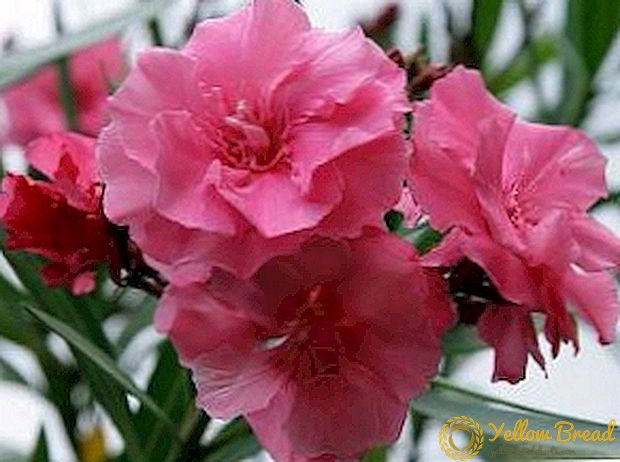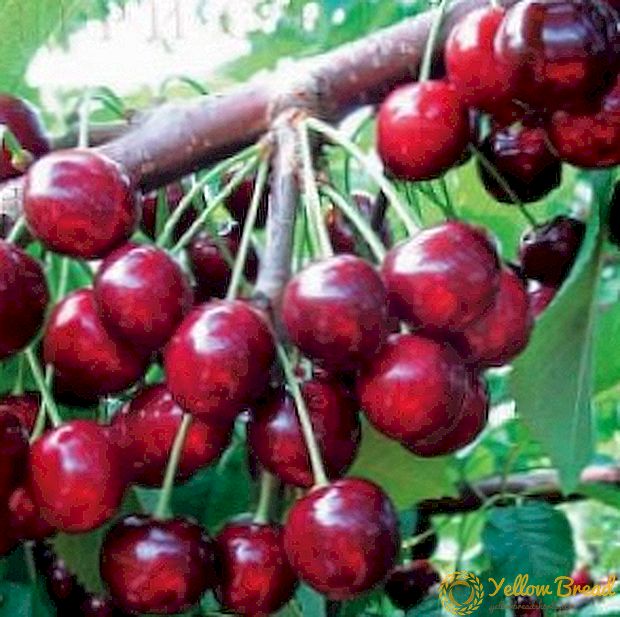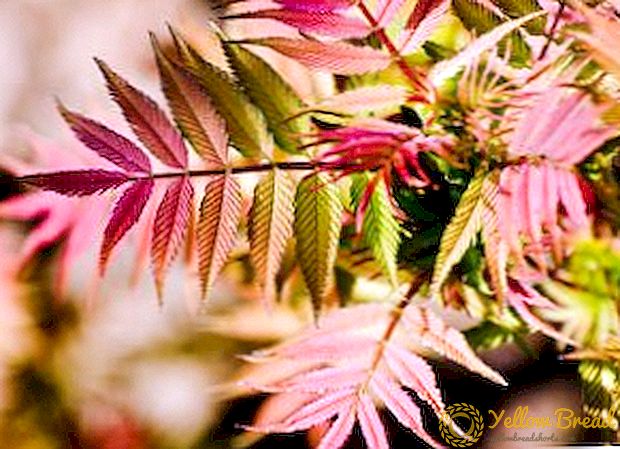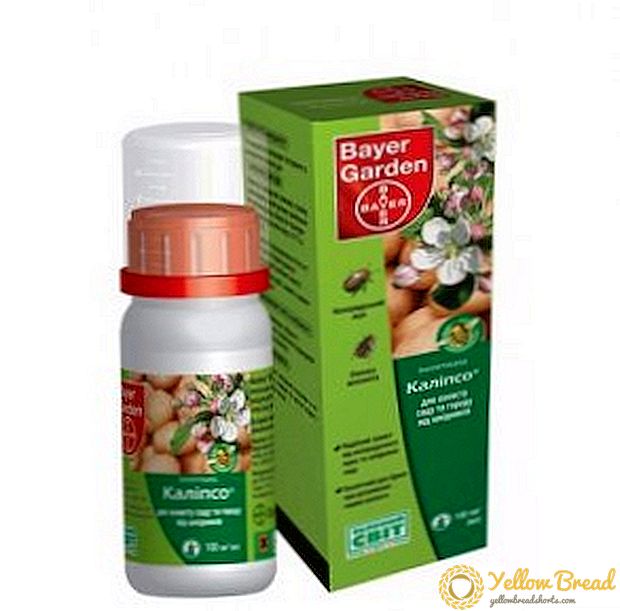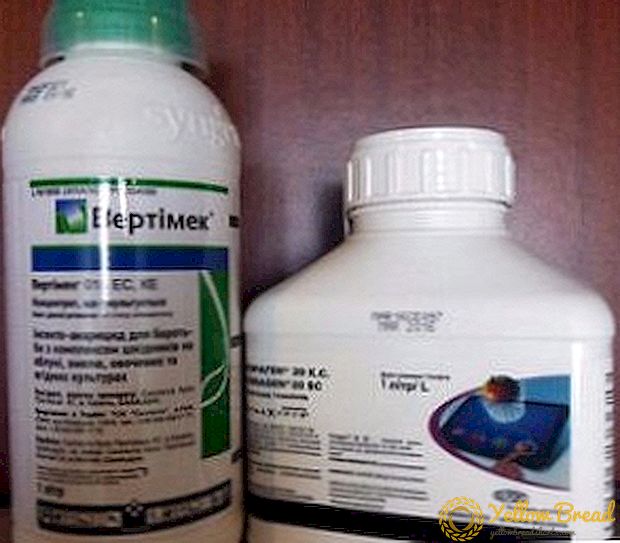Planting Momordica seeds in seedlings
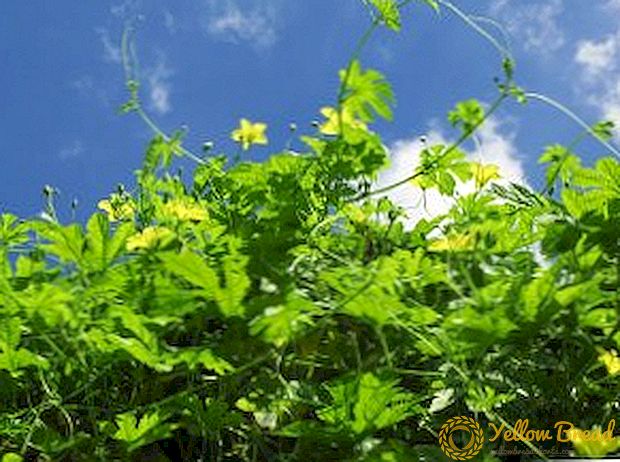 Momordica, Also known as wild cucumber, Indian cucumber, cucumber-crocodile, tropical liana, balsamic pear and many others, is an annual liana-like plant belonging to the pumpkin family.
Momordica, Also known as wild cucumber, Indian cucumber, cucumber-crocodile, tropical liana, balsamic pear and many others, is an annual liana-like plant belonging to the pumpkin family.
It can be grown as an indoor flower, in the country or in the garden for decorative purposes (the flowers and fruits of Momordica look very elegant), as well as a vegetable crop or a medicinal plant.
- Planting Momordica seeds in seedlings
- Seed preparation before planting
- Soil composition and fertilizer
- Germination temperature
- Care of momordica seedlings
- Hardening seedlings
- Planting seedlings in open ground
- Optimum landing times
- Selection and preparation of the site
- Good predecessors
- Planting procedure seedlings
- Momordica care
- Watering and spraying momordika
- Soil loosening and mulching
- Fertilizer and plant nutrition
- Garter on the support (trellis)
- Harvesting
- Pests and diseases of momordiki, how to deal with them
The very listed properties of this plant alone are reason enough to learn all about momordika.
Seed preparation before planting
 A plant can multiply by cutting, but the most popular and effective way is to grow momordica from seeds.
A plant can multiply by cutting, but the most popular and effective way is to grow momordica from seeds.
Momordica seeds can be sown immediately in open ground, however, since the plant is quite thermophilic, it is better to grow seedlings first. This should be done in late March - early April. When selecting seeds for planting, preference should be given to darker ones, since they are fully mature.
Since the Momordica seeds have a very dense shell, without additional processing before planting, as a result of which the outer shell will be broken, they germinate very poorly.
The shell of the seeds from the side of the nose is rubbed with soft sandpaper or a nail file, after which the seeds are soaked in a weak solution of potassium permanganate or in any growth stimulator, wrapped in a wet gauze or cloth, placed in a warm place (not below + 25 ° C) and kept for several days (sometimes this process can take up to two weeks) until a white spine appears from the seeds.
Soil composition and fertilizer
 Momordica has a rather weak root system and reacts very badly to the exposure of the roots, which determines certain requirements for the soil. Quite comfortable this plant feels in the soil fertilized with humus with a predominant content of clay and a significant amount of sand, neutral or slightly acidic.
Momordica has a rather weak root system and reacts very badly to the exposure of the roots, which determines certain requirements for the soil. Quite comfortable this plant feels in the soil fertilized with humus with a predominant content of clay and a significant amount of sand, neutral or slightly acidic.
When planting, the soil should be loosened and well-fed organic. Twice a month after planting seedlings, the soil should also be fertilized with mineral supplements (potash and phosphate).
Like all pumpkin, momordica does not tolerate the transplant, so it is recommended to plant the seeds in peat pots filled with a nutrient mixture, two seeds in each edge. Depth of landing - about one and a half centimeters.
After the seeds are buried in the ground, it should be generously poured over with warm water and covered with a dry layer of the mixture. Then the pots are covered with a film to create a greenhouse effect and placed in a place protected from drafts and sudden changes in temperature. The first 2-3 days after planting the ground in pots should not be watered.
Germination temperature
The optimum temperature for germination of seedlings momordiki- + 20 ° C and above. In such conditions, the first shoots should appear approximately 10 to 15 days after planting.
Care of momordica seedlings
 After seedling germination, the film is removed, and the pots are moved to a lighter place. The soil in the pots should not dry out, for which it is recommended in the evening to carry out her spraying.
After seedling germination, the film is removed, and the pots are moved to a lighter place. The soil in the pots should not dry out, for which it is recommended in the evening to carry out her spraying.
When the plant throws out the first two leaves (not counting the cotyledon), from two shoots they choose a stronger one, the second one is removed.
Hardening seedlings
A couple of weeks before planting in open ground, momordica seedlings (it should already form 2-3 true leaves) gradually begin to accustom to external conditions - temper. The temperature of the environment should not be less than + 15 ° C.
For the first time, the presence of seedlings in the open air should be only a few hours, and young shoots should be protected from direct sunlight, because training to the light, as well as to lower temperatures, should take place gradually.
Increase exposure to air should be gradually, adding an hour or two every day, and by the time of landing in the ground seedlings should be outdoors for two or three days.
If, before planting in open ground, the seedlings are in a greenhouse, instead of taking it outside, you can simply ventilate the greenhouse and later leave the doors open all night.
Planting seedlings in open ground
Optimum landing times
 The optimal age of seedlings for planting in open ground is 40-45 days. Momordica belongs to thermophilic plants, night frosts can ruin young shoots, and air temperature below +15 ° C leads to the fact that plant growth practically stops. Therefore, it is better to plant momordika in the greenhouse, it can be done at the end of May.
The optimal age of seedlings for planting in open ground is 40-45 days. Momordica belongs to thermophilic plants, night frosts can ruin young shoots, and air temperature below +15 ° C leads to the fact that plant growth practically stops. Therefore, it is better to plant momordika in the greenhouse, it can be done at the end of May.
If, nevertheless, you plan to grow Indian cucumber outdoors, you should focus on an apple tree when choosing a planting time - as soon as it fades, you can plant. This is usually the middle of June.
Selection and preparation of the site
Momordica loves light and heat, this determines the choice of landing site. It is better that it is protected from the wind and direct sunlight in the middle of the day.
To prepare the soil for the cultivation of momordiki, you should use a mixture of urea, superphosphate and potassium sulfate - one teaspoon per bucket of compost (or sweaty manure) per square meter of bed.
You can feed the soil immediately before planting, but too acidic soil should be extinguished in the autumn with lime (from half to one and a half cups per square meter).
Good predecessors
Momordica grows well after potatoes, tomatoes, various leguminous crops and doesn’t like as its predecessors pumpkin plants.
Planting procedure seedlings
 The pits for seedlings are prepared with a depth of about 40 cm, keeping a distance of 50-60 cm between plants. Directly into the hole (either after placing a layer of soil mixed with fertilizer covered with a "clean" layer of fertile soil into it), gently roll over the land lump with a seedling or put peat pot. Next, the hole is instilled and watered abundantly (three liters of water per sapling).
The pits for seedlings are prepared with a depth of about 40 cm, keeping a distance of 50-60 cm between plants. Directly into the hole (either after placing a layer of soil mixed with fertilizer covered with a "clean" layer of fertile soil into it), gently roll over the land lump with a seedling or put peat pot. Next, the hole is instilled and watered abundantly (three liters of water per sapling).
Momordica care
In general, a mad cucumber is rather unpretentious, and yet the care of momordica has some peculiarities.
In particular, to achieve a good harvest, momordika needs proper formation: all lateral processes at a height of 50 cm from the ground after the appearance of the first ovary must be removed, leaving only three main shoots.
Watering and spraying momordika
During the growth period, the Indian cucumber needs abundant watering, but the weak root system of the plant is prone to decay, so an excessive amount of moisture is harmful to it.
Spraying should be carried out before sunset. It is important that the water used for irrigation and spraying is not too cold.
Soil loosening and mulching
The bed with momordika can be mulched with straw or peat, this will attract earthworms, providing the soil with humus and airing it. To prevent evaporation of moisture from the soil surface, it can also be covered with black agrofibre. This will also protect the soil from temperature extremes.
Mulching allows you not to weed and loosen the ground, so that the weak root system of the plant will not be subjected to mechanical damage.
Fertilizer and plant nutrition
 Feed momordica begin in the early stages of flowering, then - during the fruiting period and the last time - 2-3 weeks before the end of the harvest.To do this, complex mineral fertilizers (1 tbsp) and organic matter, such as mullein (1 tsp. Kashitsy), diluted in a bucket of water.
Feed momordica begin in the early stages of flowering, then - during the fruiting period and the last time - 2-3 weeks before the end of the harvest.To do this, complex mineral fertilizers (1 tbsp) and organic matter, such as mullein (1 tsp. Kashitsy), diluted in a bucket of water.
Garter on the support (trellis)
Momordica - This is a vine, so it needs support. It can be grown along the walls of the gazebo or install support in the form of a grid or a vertical frame. The lower crossbar should be located at a height of 80-90 cm. After the escape reaches the crossbar, it should be thrown through it and after 20-30 cm pinch.
Harvesting
The harvest of Indian cucumbers should be harvested about two weeks after the fruits appear, later they start to taste bitter.
Pests and diseases of momordiki, how to deal with them
 Momordica is not for nothing called a cucumber. In addition to the external similarity of these cultures, common enemies. First of all it aphid, powdery mildew, white rot and bacteriosis.
Momordica is not for nothing called a cucumber. In addition to the external similarity of these cultures, common enemies. First of all it aphid, powdery mildew, white rot and bacteriosis.
It is necessary to treat the plant with specialized chemicals immediately after the first signs of the disease appear: powdery mildew - fungicides, colloidal sulfur, copper oxychloride; anthracnose and cladosporia - Bordeaux mixture.
Yellowed leaves on momordika may be the result of a sharp temperature drop. The plant can be fed onion extract and spray infusion of ash.
With rotten roots you can try to handleby pouring a fertile layer of fresh soil (up to 5 cm) around the plant, but if the plant is withered, it should be dug, and the hole filled with fertile soil.
Almost all diseases of momordica are the result of improper care of a plant, first of all it concerns overflows, as a result of which the weakest link of Indian cucumber is damaged - the root system. 


